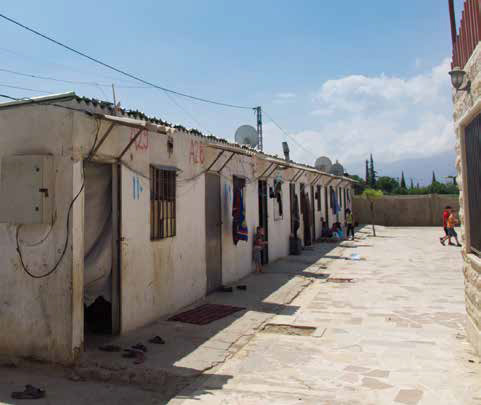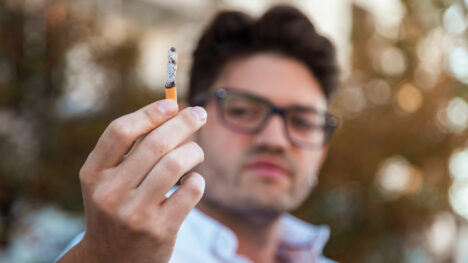
Downtown Beirut, Lebanon. Sitting in a busy classroom beside an open window, the warm breeze blows against my face. Traffic crawls past on the street below, car horns sounding periodically as another inconsiderate driver pulls his vehicle out in front of an unsuspecting victim. But there are other sounds in the classroom: excited children laughing, giggling and calling out in Arabic; the teacher scribbling on a whiteboard and trying to settle the students.
The makeshift school, consisting of three classrooms on the second floor above a bank, runs morning and afternoon learning sessions for Syrian refugee children who have fled their homes with their families to seek safety in Lebanon. One hundred and twenty excited children cram into this tiny school each day to learn Arabic, English, maths and science. The school is funded by the Adventist Development and Relief Agency (ADRA) Australia.
The brightly painted rooms create a positive atmosphere and the kids are buzzing with energy. It seems a long way from the trauma of Syria. These children are among the millions of refugees whose plight has been highlighted by worldwide media coverage, particularly following the tragic photo last year of three-year-old Aylan Kurdi, found washed up on a beach in Turkey, and the ongoing refugee arrivals in Europe.
The civil war raging in their country has completely turned their lives upside down. The war has lasted five years, but their recovery will take decades. A staggering one in every two Syrians has been displaced.
One of these is Fatima*, a mother of four children—three girls and a boy. Fatima and her family were living in Aleppo in northern Syria when the fighting suddenly forced them to flee. Fatima thought they would be able to return after one or two months, but two years later they’re still stuck living in a small room in crowded Beirut staring into an uncertain future.
“It isn’t easy for us,” Fatima said. “It’s so expensive and work for my husband isn’t so good. I’m always trying to find a way to pay the rent. He’s a tailor, but this kind of work is so hard to find in Lebanon. He can’t find factory work. He just works for himself, a little time here, a little time there. It’s so bad for that kind of work.”
We visit other people in refugee camps close to the Syrian border. Their situation is arguably bleaker than Fatima’s. Trapped in a refugee camp, they have even less hope and certainty for the future. Meeting them leaves me with a feeling of despair. They don’t deserve to be here and they have little power to escape their surroundings—tents flapping in the wind, a dried-up well, a stifling hot desert, endless boredom and lack of work.
To make matters worse, in 2015 the United Nations World Food Program (WFP) cut its assistance to Syrian refugees in Lebanon due to funding shortfalls. Some now receive nothing at all, while those who do receive something get only $A20 per month. When I met her, Fatima was among the unlucky ones who’d had her family’s vouchers cut.
“At first we received some food vouchers, but now nothing,” she said. “Last month was the last one. Now we’re waiting. All the Syrians are like this because the United Nations doesn’t have money for all the Syrians, just those with special situations. So everyone now waits to see whether they’ll receive assistance for food. I don’t know if they’ll give us food next month or not.”
But Fatima smiles when she tells me how the school has transformed the lives of her two children who are old enough to attend.
“My children used to sleep all day, but now they bounce out of bed before dawn. They’re so excited to go to school and learn!”
In late 2015, the United Nations Children’s Fund said that 700,000 Syrian refugee children in Lebanon, Jordan and Turkey were not attending school. An entire generation is at risk of missing out on an education. And while ADRA’s school is but a drop in a big bucket, it’s life-changing for Fatima’s children and many others.
The amazing thing is that every child I spoke to at the school said they wanted to become either a teacher or a doctor. Why? Because they want to shine their light to help others. These are kids with an incredible heart for service and a desire to pay forward the opportunities they’ve received..









